 Want to publish the best possible Facebook posts to your page?
Want to publish the best possible Facebook posts to your page?
Looking for a way to evaluate which versions of your posts perform best?
Facebook dark posts allow you to run and test content without posting that content to your page's timeline.
In this article, you'll discover how to use dark post ads to optimize your Facebook content.
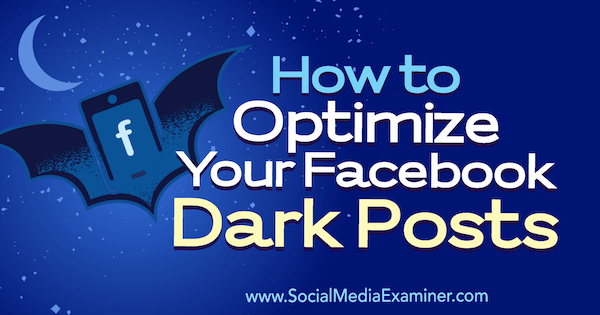
#1: Choose a Content Variable to Test
Arguably, the most important part of a successful social media test is to carefully identify and isolate the exact variable you want to test.
Although anyone can look at Facebook Insights to see which posts succeeded, the challenge is determining whether one post succeeded over another because of the image, the post copy, or even the time of day you posted. Each of these is a variable, and no matter how many variables you want to test, you need to test them one at a time.
How do you decide which to test first and which matters most? To begin, identify the content variables you might be able to test. These include:
- Post type (video, photo, GIF, link, carousel, or live post)
- Visual style
- Colors
- Headline
- Voice (your perspective, such as the first person or second person, as well as your distinct way of looking at your topic, such as humor or inspiration)
As you consider this list, think about which variables you actually have control over. For instance, if testing reveals your audience loves high-production videos but you don't have the budget or capacity to produce them, what's the point? Instead, begin by testing the variables that you have the most control to change easily. Voice and post copy are likely culprits.

Next, identify which variables you already suspect make a big difference. Many social media and advertising experts say that post copy makes less of a difference than images. After watching your analytics, you may have suspicions about how true this is for your audience.
#2: Pick a Single Metric That Defines Success
After you choose which variable to test, you need to decide what defines success. A simple (and sadly, all-too-common) goal like “engagement” isn't specific enough. Instead, identify a single metric that's most important and/or valuable. For example, you might measure shares, comments, or link clicks.
To choose the best metric, think back to your social media strategy. What are you really trying to achieve? Pick the metric that's most closely tied to your business goals and objectives. For example, if your goal is to increase brand awareness, measuring shares makes sense. If your goal is to grow your email subscriber list, you'll want to measure clicks on a landing page that shows after a completed signup.

#3: Create Variations of Your Post
After you have the variable and metric, you can lay out your plan for social media testing against your editorial calendar. For instance, you may decide that for your upcoming summer campaign, you'll run tests on photography, comparing photos of a product by itself with no styling, in a lifestyle setting, and with people in the photos.
To prepare for the test, create variations of your Facebook post, altering the content in a way that tests only one variable at a time. For example, for this Facebook share from southern culture magazine Garden & Gun, you could test the copy, image, and headline. To test the post copy, you might create two variations in which only the copy is different.

The original post copy is straightforward and short, with a teaser for the article content. If you're testing how the length of the copy affects your chosen metric, you might write one short intro with a teaser. State why the author loves Alabama's utopia by the bay and thinks you should too.
Get World-Class Marketing Training — All Year Long!
Are you facing doubt, uncertainty, or overwhelm? The Social Media Marketing Society can help.
Each month, you’ll receive training from trusted marketing experts, covering everything from AI to organic social marketing. When you join, you’ll also get immediate access to:
- A library of 100+ marketing trainings
- A community of like-minded marketers
- Monthly online community meetups
- Relevant news and trends updates

Discover Proven Marketing Strategies and Tips
Want to go even deeper with your marketing? Check out the Social Media Marketing Podcast! Publishing weekly since 2012, the Social Media Marketing Podcast helps you navigate the constantly changing marketing jungle, with expert interviews from marketing pros.
But don’t let the name fool you. This show is about a lot more than just social media marketing. With over 600 episodes and millions of downloads each year, this show has been a trusted source for marketers for well over a decade.
In the second version, you might try a medium-length quote from the article: “My dear fellow Southerners, you must visit Fairhope, Alabama. I was only 10 years old the first time I saw Fairhope, and for me, it was love at first sight.” Remember, if you're testing copy, don't change anything from one post to another except the copy. You must use the same image and the same headline.
#4: Test Each Variation as a Dark Facebook Ad
With your content ready to go, you can use dark post ads on Facebook (also known as unpublished page posts) to test these variations. Facebook dark posts are a smart choice because they don't publish as organic posts on either the feeds of your fans or on your timeline. Because you'll publish multiple iterations of the same post, eliminating variables such as organic engagement and time posted is ideal.
Yes, testing with dark posts costs money, but keep in mind you're essentially using paid support to help guide your organic strategy. The things you learn from A/B testing with paid dark posts can be applied to your larger strategy.
You can create dark posts using Page Composer or Power Editor. In Power Editor, click the menu button and select Page Posts under Create & Manage.
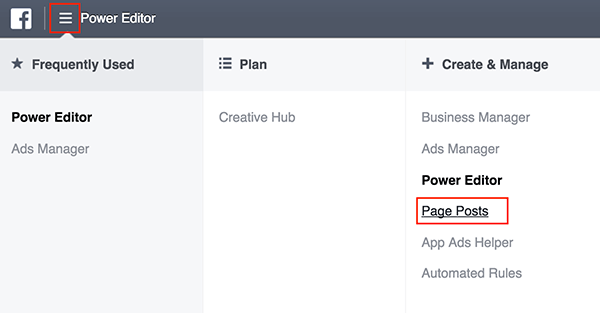
Then click Create Post.

Now choose the type of post you want to create and enter the info for the post. You want to create each dark post as an ad, so select Only Use This Post for an Ad.
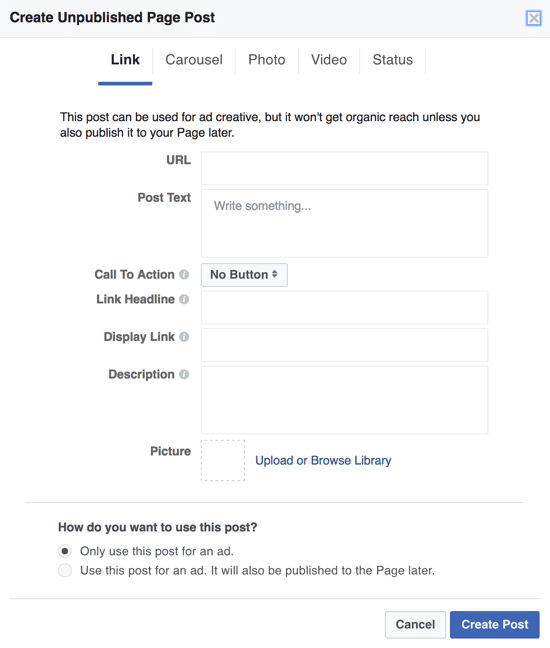
After you compose your dark posts, create a campaign and use A/B testing to see which variation performs best.
#5: Track and Analyze the Results of Your Ad Campaign
If you're controlling your variables and using dark posts for A/B testing, you'll start to see trends emerge. However, you'll still need to test combinations of different variables. As you begin to see results, be sure to track them in a spreadsheet.
The sample results below indicate long copy variations perform better than shorter posts. However, each of these tests has a photo. After you test different visual types (videos, carousel, GIFs, etc.), you may find that the copy type that performs best with photos differs from the copy that performs best with videos.
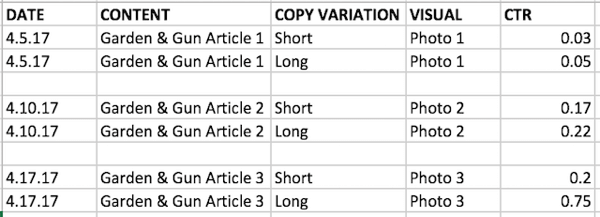
#6: Confirm Your Results Through Ongoing Organic Testing
If your budget allows you to test continuously, you can keep trying different variations of your content. In fact, the most successful Facebook users constantly test and tweak content strategy. They know that midflight campaign optimization is a powerful force when it comes to marketing campaign strategy.
That said, those of us with more limited budgets will likely need to take the testing out of the paid realm and start to look at organic posting. The challenge, of course, is controlling variables and coming up with a reporting plan that provides meaningful data.
However, if you have a well-planned editorial calendar, you can continue to control for things like the time of day you post so you can trust your ongoing social media content tests.
Conclusion
Whatever you learn, a social media test on Facebook is a great way to maximize your social content. You can learn what voice, image types, and headlines work best to get your audience to click, like, and share. And you can maximize what you learn when you take these lessons from your paid A/B tests and extrapolate them to your organic posting.
You might discover something unexpected, and you'll surely learn more about what content your particular audience responds to.
What do you think? Have you tried any of these techniques to test your content? What suggestions do you plan to try for your own social media posts? Please share your thoughts in the comments.
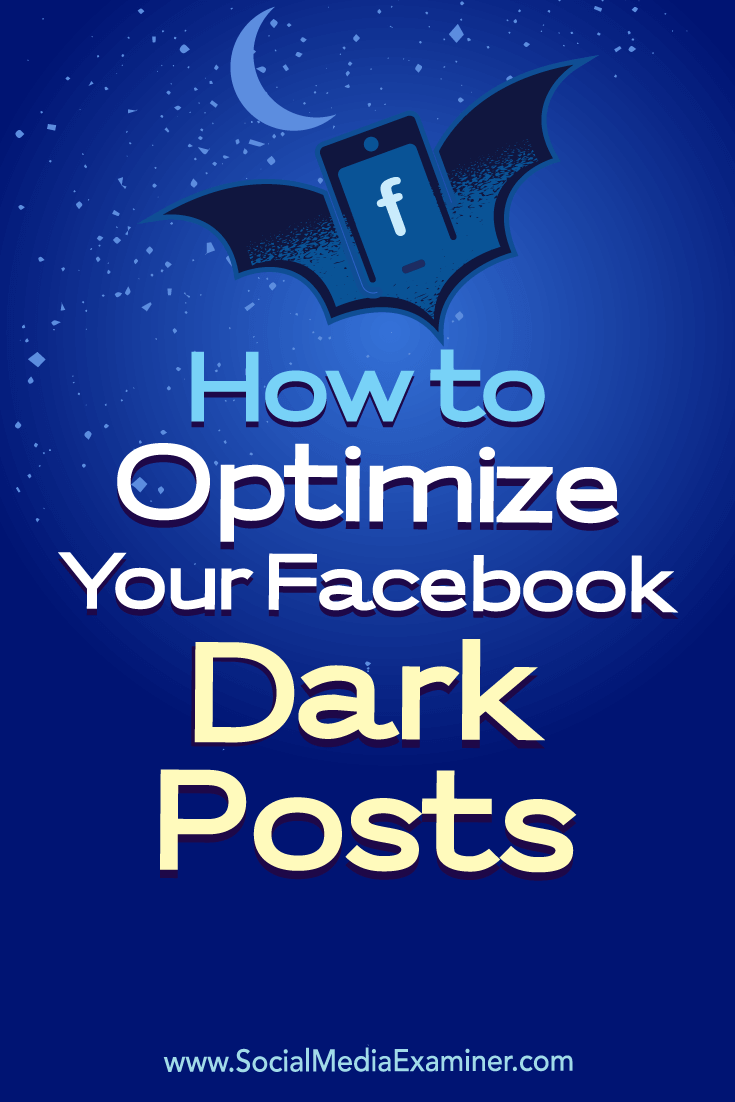
Attention Agency Owners, Brand Marketers, and Consultants

Introducing the Marketing Agency Show–our newest podcast designed to explore the struggles of agency marketers.
Join show host and agency owner, Brooke Sellas, as she interviews agency marketers and digs deep into their biggest challenges. Explore topics like navigating rough economic times, leveraging AI, service diversification, client acquisition, and much more.
Just pull up your favorite podcast app, search for Marketing Agency Show and start listening. Or click the button below for more information.

